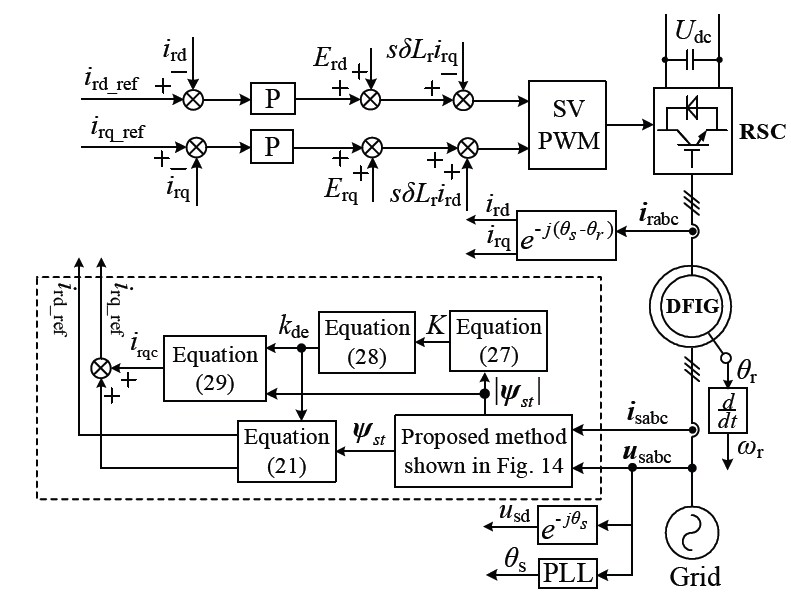Improved Continuous Fault Ride Through Control Strategy of DFIG-based Wind Turbine during Commutation Failure in the LCC-HVDC Transmission System
Also Available Domains Wind Power Generation
Objective
Main objective of this project is enhancing the stability of the sending AC system and improving the continuous FRT control strategy.
Abstract
In this project, we propose commutation failure fault which is usually occurs in the Line Commutated Converter (LCC)-based High Voltage Direct Current (HVDC) transmission system. When commutation failure fault occurs, the voltage of sending Alternate Current (AC) system changes rapidly and the connected Doubly Fed Induction Generator (DFIG)-based wind turbine may be tripped. Thus, the Fault Ride through (FRT) control strategy of DFIG should be investigated for enhancing the stability of the sending AC system.
However, the voltage of the sending AC system during commutation failure isn’t changed in rectangular in shape, besides, the voltage presents the “first reduce then rise” characteristic, which is not considered in the existing FRT control strategies. In order to realize the continuous FRT of DFIG during commutation failure, the stator flux and Electromotive Force (EMF) when the stator voltage changes continuously have been analyzed for the first time in this paper. Furthermore, based on the analysis results, an improved continuous FRT control strategy is proposed.
The simulation results validate the effectiveness of the proposed method. The proposed control strategy is not only suitable for the commutation failure condition, but also for the scenario with continuous voltage variation during grid fault, which indicates that the proposed method is general.
Keywords: Wind power generation, improved continuous fault ride through control, LCC-HVDC transmission system, commutation failure; DFIG-based wind turbine.
NOTE: Without the concern of our team, please don't submit to the college. This Abstract varies based on student requirements.
Block Diagram

Specifications
Software Configuration:
Operating System : Windows 7/8/10
Application Software : Matlab/Simulink
Hardware Configuration:
RAM : 8 GB / 4 GB (Min)
Processor : I3 / I5(Mostly prefer)
Learning Outcomes
- Introduction to Matlab/Simulink
- What is EISPACK & LINPACK
- How to start with MATLAB
- About Matlab language
- About tools & libraries
- Application of Matlab/Simulink
- About Matlab desktop
- Features of Matlab/Simulink
- Basics on Matlab/Simulink
- Introduction to Wind power generation
- Introduction to power electronics converters
- Introduction to Types of Faults
- Introduction PWM techniques
- Design of DFIG Generator
- Design of Wind System
- Design of DFIG
- Design of Power electronic converters.
- How DFIG works as wind generator ?
- How to implement FRT control ?
- We can learn about the generation of gate pulses to the converter
- Introduction to controllers
- Design of PI controller
- We can learn about the HVDC
- We can learn about the Commutation failure and restoration
- Design of Line Commutated Converter (LCC)-
- Introduction to open loop and closed loop control system
- Introduction to phase locked loop (PLL)
- Introduction to SVPWM
- Project Development Skills:
- Problem analyzing skills
- Problem solving skills
- Creativity and imaginary skills
- Programming skills
- Deployment
- Testing skills
- Debugging skills
- Project presentation skills
- Thesis writing skills





 Paper Publishing
Paper Publishing
